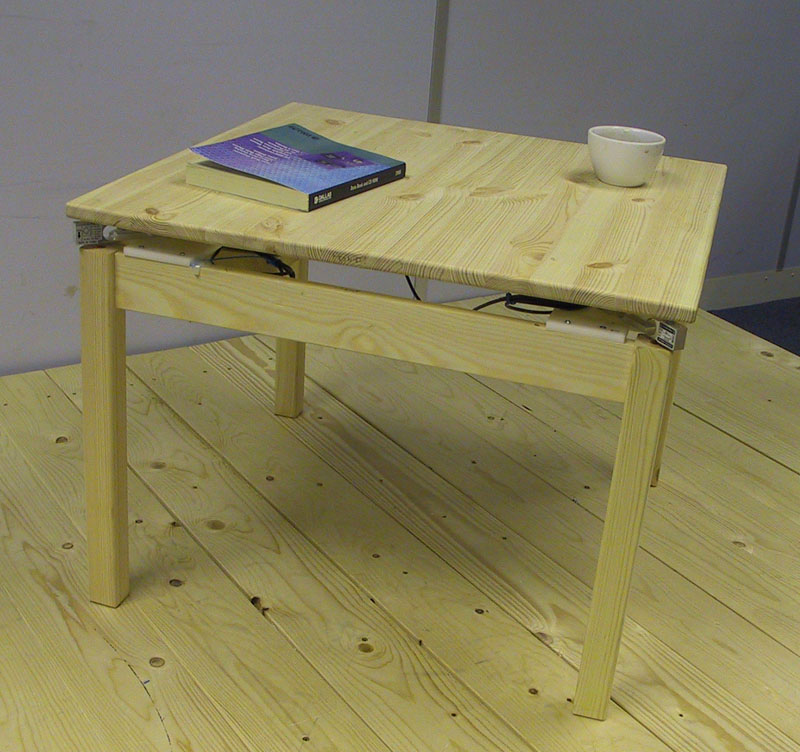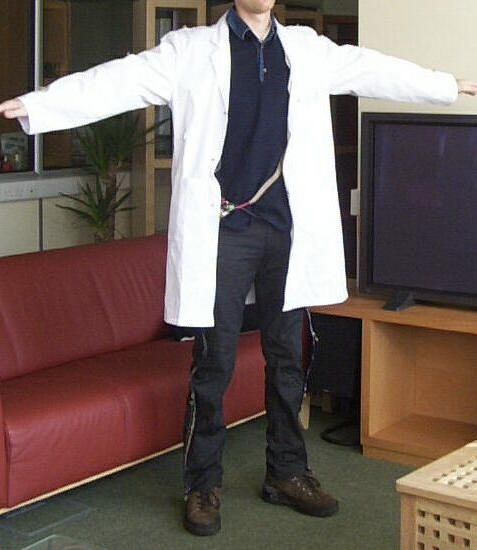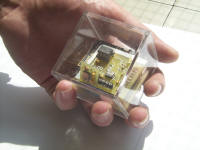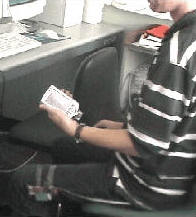Previous
projects at TU Darmstadt:
|
|
- CESORA (2005-2007) Context Aware
Support for Business Applications, project
funded by SAP Research.
-
MOBVIS
(2005-2008) Vision Technologies and
Intelligent Maps for Mobile Attentive
Interfaces in Urban Scenarios.
EU-funded IST project under FET open,
#FP6-511051. In cooperation with
Joanneum Research Austria, the
University of Ljubljana, KTH Stockholm,
and Tele Atlas NV.
-
Porcupine2
(2006-2009) Long-term, fine-grained
actigraphy with a small-scaled wearable
sensor -- Open-source project on
sourceforge.net.
-
Activity Spotting (DFG project, in
cooperation with the University of
Passau)
|
 |
Previous
projects at Lancaster University:
|
|
-
Smart-Its
(2001-2003) Small-scale embedded
devices that can be attached to
everyday objects to augment them with
sensing, perception, computation, and
communication. Enabling technology for
building and testing ubiquitous
computing scenarios. The project is
part of the European initiative The
Disappearing Computer, and funded in
part by the Commission of the European
Union, and by the Swiss Federal Office
for Education and Science.
|
 |
-
Equator
(2001-2006) Uncovering and supporting
the variety of possible relationships
between physical and digital worlds,
improving the quality of everyday life
by building and adapting technologies
for a range of user groups and
application domains. Six-year,
UK-funded EPSRC IRC project
(GR/N15986/01 - "Technological
Innovation in Physical and Digital
Life") in cooperation with seven other
UK institutions: the University of
Bristol, the University of Glasgow, the
University of Nottingham, the Royal
College of Art, the University of
Southampton, the University of Sussex,
and University College London.
|

|
-
Pin&Play (2002-2003)
Pin&play is a new approach of
ad-hoc networking among objects that
people can attach to large surfaces,
such as notes that people pin to notice
boards or artifacts that people hang on
the walls in their home. Sponsored by
the IST-FET programme of the European
Commission under contract code
IST-2001-37007, and in cooperation with
Viktoria Institute, Sweden.
|
 |
-
The Multi-Sensor Wearable (2002)
hundreds of body-worn sensors to make
wearables truly perceptive.
-
Cubicle
(2002-): Interaction using a
self-sensing autonomous cube.
-
CommonSense (2003-2006):
Distributed Multi-sensor context
acquisition in ubiquitous computing and
wearable computing environments. EPSRC
funded project under grant GR/S08848/01
("Multi-Sensor Perceptive Interfaces in
Wearable and Ubiquitous Computing")
.
-
UbiCare (2003-): Ubiquitous Computing
for Healthcare in the Community. DTI-funded
project with Imperial College, University
of Southampton, and seven industrial
partners: Cardionetics, Central Data
Control, Medtronic, Orange, Telewest, Tyco
UK, and Toumaz Technology.
|


|
Previous projects at Starlab
Research:
|
|
-
TEA:
Technology for Enabling Awareness
(1998-2000) Adding sensor components to
mobile devices (such as mobile phones)
to make them 'aware' of their context.
EU-funded IST project under the ESPRIT
IT for Mobility #26900. In cooperation
with the University of Karlsruhe,
University of Bologna and Nokia
research.
-
I-Wear (1999-2001) 'Intelligent'
clothing with embedded sensors,
processing capabilities, memory and
power. Starlab Consortium project with:
Recticel, Bekintex, Courreges, Vasco,
Adidas, AT&T, Epson, Energizer,
Siemens, France Telecom, Samsonite,
Philips, SCA, Orange, and Gore. And
with Walter Van Beirendonck as creative
director.
-
T-Garden
(2000) Interdisciplinary project
exploring methods of artistic
expression and social interaction in
mixed reality. Internal Starlab
project.
|


|








